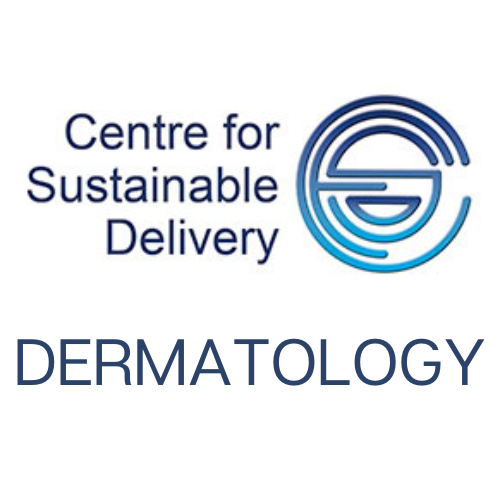Mild: A score of 1 or 2 indicates mild or moderate hyperhidrosis. See hyperhidrosis disease severity scale in clinical resources box.
Self-care management strategies
Primary axillary hyperhidrosis:
- Commercial antiperspirant rather than deodorant.
- Use emollient washes, rather than soap-based products
- Avoid tight clothing and man-made fabrics
Primary Plantar Hyperhidrosis:
- Alternate footwear
- Moisture wicking-socks, change twice daily
- Avoid occlusive footwear such as boots-encourage leather shoes
Primary focal hyperhidrosis:
- 20% aluminium chloride hexahydrate over the counter preparations such as roll-on antiperspirants and spray.
- Apply at night just before sleep to skin of the axillae, feet, or hands every 1–2 days as tolerated, until symptoms improve, then use as required. Wash off in the morning.
- For craniofacial hyperhidrosis, consider antiperspirant wipes (aluminium chloride) for application to the face (off-label use).
If skin irritation occurs with aluminium salt preparations, prescribe hydrocortisone 1% cream to be applied once daily for up to two weeks. Also advise soap substitute and to reduce frequency of application until symptoms resolve.
Moderate: A score of 2 or 3 indicates moderate hyperhidrosis. See hyperhidrosis disease severity scale in clinical resources box.
Oral and topical therapy
- Higher strength aluminium salts (up to 50%).
- Topical glutaraldehyde or formaldehyde may be used.
- Topical glycopyrrolate may be useful for primary craniofacial hyperhidrosis (off-label indication) although is availability is usually within a secondary care setting.
- Oral anti-muscarinics such as oxybutynin and glycopyrronium bromide. Beware anti-muscarinic side effects.
Oral antimuscarinics decrease sweat secretion.
- Oxybutynin (standard release): 5mg OD initially, then increase to twice daily. Unlicenced indication.
- Propantheline: 15mg TDS one hour before meals. Licenced. Dose could be titrated up to maximum of 120mg/day.
Patients should be counselled with regards to anti-muscarinic side effects.
Iontophoresis therapy
- Recommended for palms and soles. Axillary treatment is impractical. If unsuccessful, glycopyrronium bromide (an anti-muscarinic agent) may be added to the water. Long term maintenance required.
- Iontophoresis machines can be rented/purchased and information regarding this is available on the international hyperhidrosis society website (link below)
Severe: A score of 3 or 4 indicates severe hyperhidrosis. See hyperhidrosis disease severity scale in clinical resources box.
Botulinum A Toxin:
- Largely used for axillary hyperhidrosis
- Can be used for palms, soles, craniofacial hyperhidrosis but treatment is painful in these areas, limiting use. Effects last 6-9 months.
Surgery
- Localized sweat gland resection may be carried out for small areas of axillary hyperhidrosis.
- Endoscopic thoracic sympathectomy (ETS) should only be considered when all other options are ineffective or not tolerated.
- Complications include compensatory hyperhidrosis elsewhere on the body (very common), pneumothorax (common, gustatory sweating (common), atelectasis, significant bleeding.
Please note surgical approaches are rarely utilised due to the potential risks involved.
